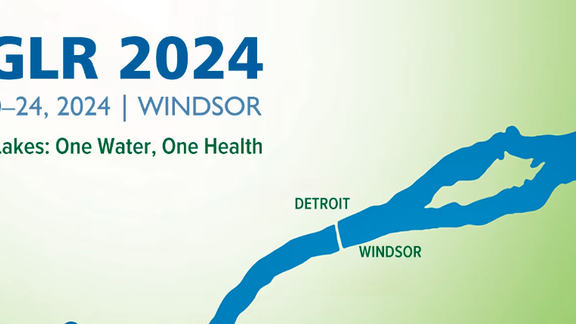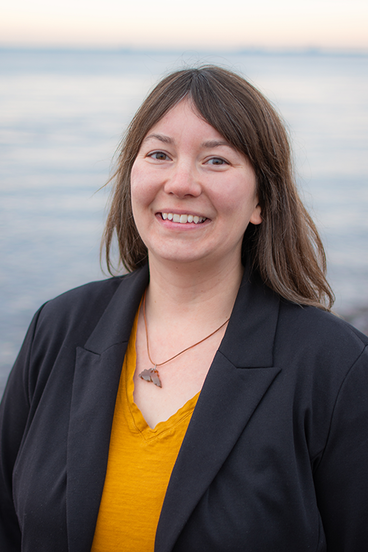Project Details
Project description
Since 2013, crude oil production in North America has increased dramatically, originating in large part from North Dakota's Bakken Oil Fields and the oil sands of Alberta, Canada. According to the U.S. Energy Information Administration, United States production is expected to reach record levels in 2023 with 12.4 million domestic barrels produced per day. In the short-term, the U.S. is expected to overtake Australia and Qatar as the number one exporter of gas.
Hazardous materials, including unrefined and refined petroleum products travel by pipeline, rail, and truck throughout the Great Lakes, St. Lawrence River, and Lake Champlain regions. As North American production of crude oil has increased, the capacity for pipeline transport has been outpaced, resulting in a commensurate increase in transport by rail and truck. The need to understand the total costs, relative risks, and opportunities of transportation choices to carefully balance economic development with safety, quality of life, and the security of the environment has been voiced by many. Those many include community groups, economic development organizations, the energy industry, the transportation and supply-chain industry, researchers, non-governmental organizations, and decision-makers in Tribal/First Nations, federal, state/provincial, and local levels.
The goal of the Hazardous Material Transport Outreach Network (HazMaTON) is to provide stakeholders with resources on economic and environmental issues associated with transportation of hazardous materials in the Great Lakes basin and to create a forum for them to share knowledge, concerns, challenges, and progress.
Why Minnesota Sea Grant?
The Hazardous Material Transport Outreach Network (HazMaTON) project supports Minnesota Sea Grant’s Resilient Communities and Economies and Healthy Coastal Ecosystems focus areas. Project goals include sustaining and protecting water resources to meet existing and emerging needs of the communities, economies, and ecosystems that depend on them. Since 2014, Minnesota Sea Grant has helped to lead what was then called the Great Lakes Crude Oil Transport Team and continues to successfully bring together a binational group of partners. The project team will continue to provide science-based, non-advocacy resources to a target audience with a wide range of interests and perspectives to ensure that hazardous materials are transported safely and sustainably.
What have we done lately?
Summer - Fall 2024: The HazMaTON summer webinar series returned in July 2024 and ran through September 2024. Recordings of the webinars are available on MNSG's YouTube.
Participants & audience
Target audiences of the Hazardous Material Transport Outreach Network (HazMaTON) include binational organizations, community groups, economic development organizations, the energy industry, Tribal/First Nations governments, U.S. and Canadian federal agencies, non-governmental organizations, academic researchers, state/provincial government agencies, supply chain/logistics organizations, and the transportation industry. HazMaTON project participants include staff from Sea Grant programs in Lake Champlain (Vermont), Michigan, Minnesota, New York, Ohio, Pennsylvania, and Wisconsin.
HazMaTON members include representatives from the International Association for Great Lakes Research, International Joint Commission, Lake Champlain Basin Program, National Oceanic and Atmospheric Administration, University at Buffalo, United States Coast Guard, and United States Department of Transportation Maritime Administration.
Funding
Directors from the eight Great Lakes Sea Grant programs are providing funding for half of the Minnesota Sea Grant Great Lakes Transportation Extension Educator position for 2021-2024 to manage the Hazardous Material Transport Outreach Network (HazMaTON) and provide leadership, coordination, facilitation, and issue scoping.
Project history
2023
- Summer-Fall 2023: The HazMaTON summer webinar series returned in May 2023 and ran through September 2023. Webinars will take place on the fourth Wednesday of each month from 12 p.m. to 1 p.m. ET. Recordings of the webinars are available on MNSG's YouTube.
- May 2023: HazMaTON members chaired a session at the International Association for Great Lakes Research (IAGLR) 66th Annual Conference that occurred May 8-12, 2023, in Toronto, Ontario. The theme of the conference was “Adapting to Climate Change” and HazMaTON’s session was titled “Great Lakes Oil Spill Science: Planning and Response in a Changing Climate.”
- April 2023: Minnesota Sea Grant Great Lakes Transportation Extension Educator Kelsey Prihoda was a panel presenter for the Extension Disaster Education Network (EDEN) professional development webinar titled “Extension’s Role and Response to Chemical and Oil Spills." Kelsey presented “Who and What is HazMaTON: How the Hazardous Material Transport Outreach Network can Help Extension Professionals.” A recording of the webinar is available on EDEN’s YouTube Channel.
- March 2023: HazMaTON launched the fourth edition of The HazMaTON Quarterly newsletter, which is available on HazMaTON.org along with other archived newsletter editions.
- February 2023: Five HazMaTON members attended the Northern Michigan Area Committee Meeting and the No Spills Conference held at the Park Place Hotel and Conference Center in Traverse City, Michigan. As a conference vendor, HazMaTON engaged with conference attendees who learned about the focus of our network; what we can offer industry, policymakers, and scientists; past accomplishments; and future plans as guided by our finalized 2023-2024 strategic plan.
- January 2023: The project team completed a year-long strategic planning process, using needs assessment data generated through stakeholder workshops and the 2017 Crude Move Symposium. The 2023-2024 HazMaTON Strategic Plan is available on HazMaTON.org.
The Hazardous Material Transport Outreach Network (HazMaTON) has been meeting monthly since November 2021.
Program Staff
Program News

If you’re reading this, then it’s likely you’re one of the roughly 40 million people whose drinking water comes from the Great Lakes.

This position has been filled.
